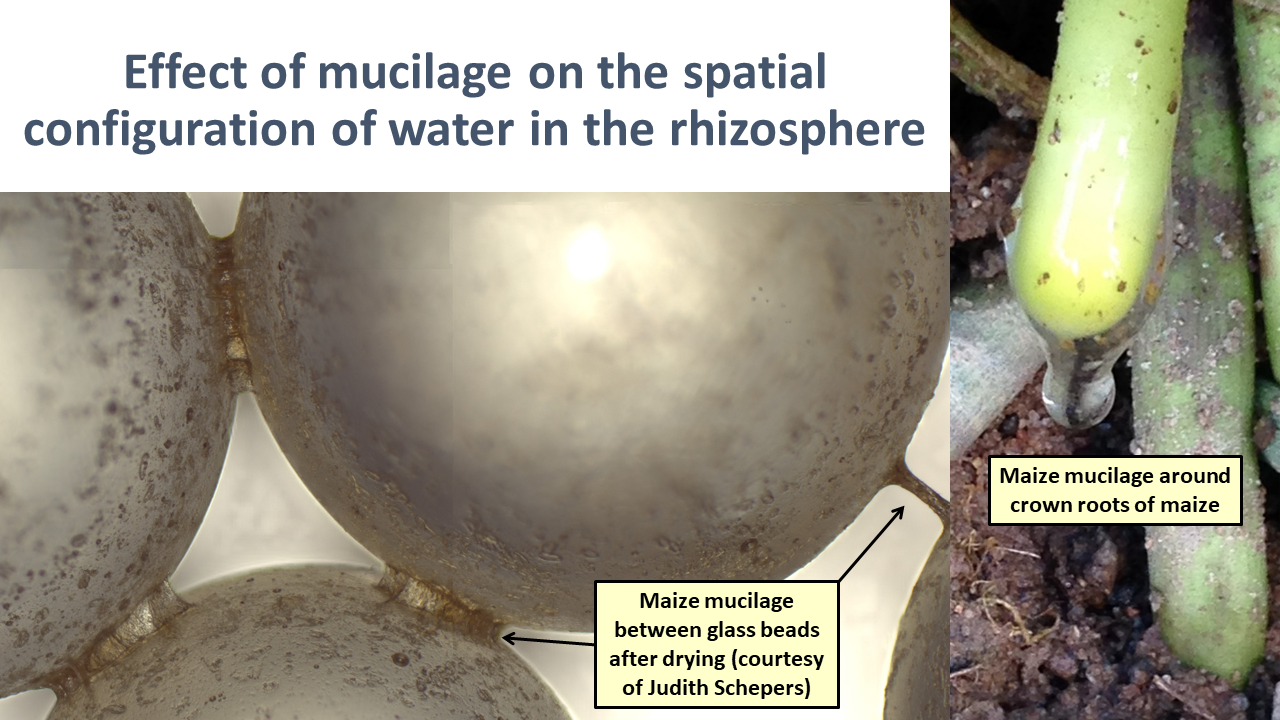Project participated only in SPP-Phase 1
P4 - Liquid Rhizosphere
Spatial organization of the liquid phase in the rhizosphere

The rhizosphere is crossed by a vast water flux and hosts a tremendous number of microorganisms, which together with the roots engineer the soil physical properties. Prominent among such engineering activity is the secretion of mucilage from the root tips, which changes key physical properties of the soil solution: it adsorbs water, it increases its viscosity and decreases its surface tension, affecting also the contact angle. By changing these properties, mucilage alters the soil hydraulic properties (the water retention curve and unsaturated hydraulic conductivity) and the soil moisture dynamics during drying/wetting cycles. Furthermore, mucilage brings into question well accepted paradigms, such as the fact that the soil water content should decrease towards the root surface (but it does not!) and the concept that capillary forces together with the adsorption of water films on the soil particle surface determine the spatial configuration of the gas–liquid interface. Indeed, the high elongational viscosity of mucilage is responsible for the formation of stable filaments and 2D structures such as hollow cylinders, which are not predicted by existing concepts in soil physics, and that contribute to maintain the root surface physically connected to drying soils.
In this project we aim to understand the fundamental physics of the interactions between mucilage and the soil matrix, their implications for rhizosphere processes (particularly related to water retention and flow) and plant growth. To achieve this goal, high resolution X-ray CT imaging of mucilage distribution in the rhizosphere will be combined with measurements of mucilage water-related properties, such as viscosity, surface tension and water potential. The expected outcome of this project is the understanding of the role mucilage in engineering the rhizosphere hydraulic properties.
Link to English scientific abstract
Link to German scientific abstract
